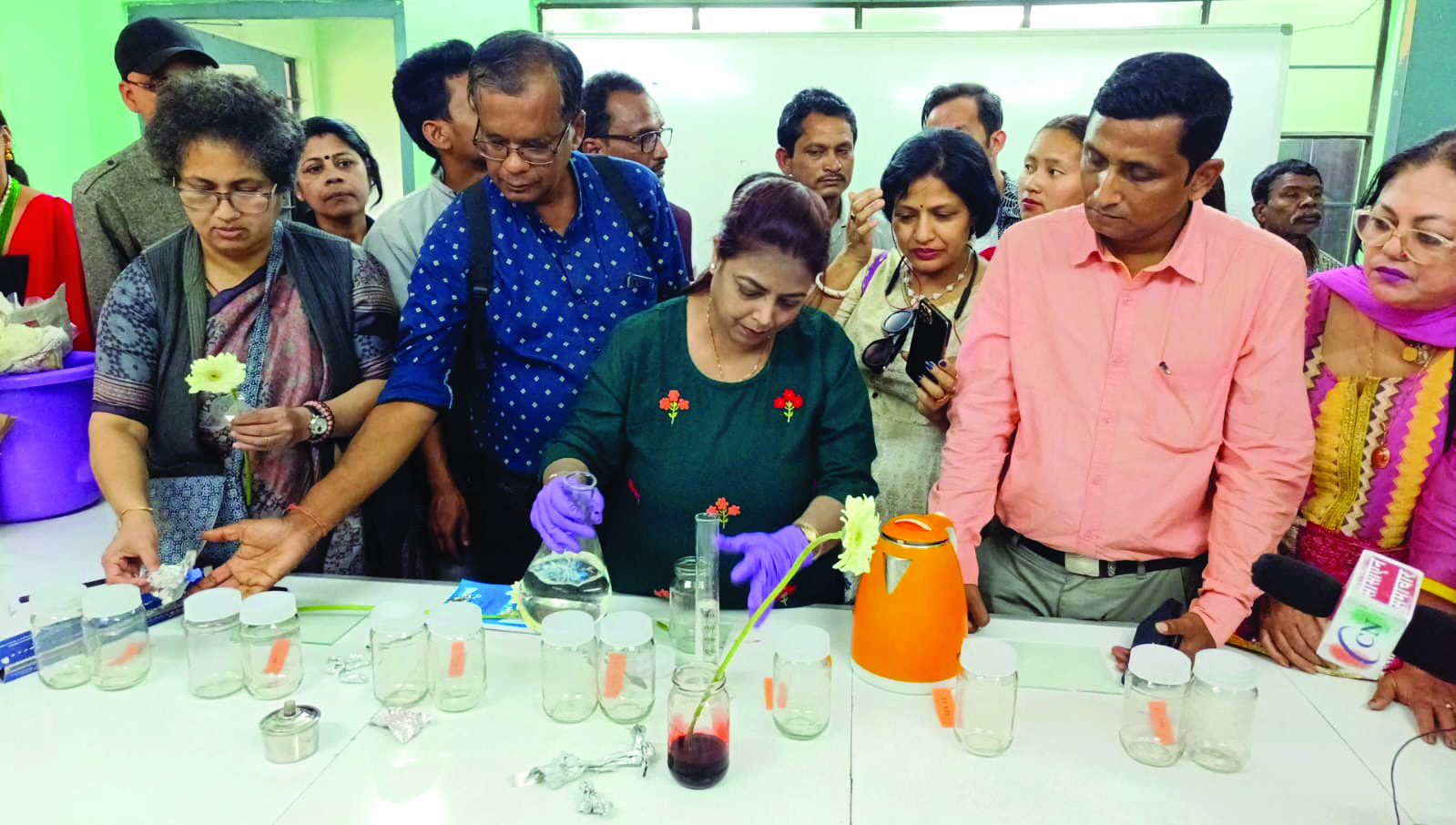Natural dyeing: Researchers find way to give ‘Rajanigandha’ a colourful makeover

siliguri: Now you can get your pale white Tuberose flowers (Rajanigandha) in a colourful Avatar. Not only Tuberose, but all white and light colored flowers can now be turned into colourful ones, thanks to the research done by Center of Floriculture and Agri-Business Management (COFAM) of the department of Bio-technology of University of North Bengal. This is to meet the growing demand for bright coloured flowers in the market.
On Friday, the department had organised a hands-on training on ‘Flower Dyeing’ using a scientific method. Flower growers, Self-help groups, women from the smallest community Dhimals participated in the training program held at the North Bengal University campus. The COFAM is also aiming to economically empower these people with this training program. Any white or light coloured flower could be converted into a colorful flower using natural colours.
Ranadhir Chakraborty, the professor of Biotechnology department said, “The aim of organising such a training program is to generate another income source for those who are working on agriculture fields. And also for those women who belong to the village areas. With each flower stick, they can earn a profit minimum of Rs 20. We will also help them in communicating with the retail traders.”
Natural dyes are first extracted from flowers, fruits and leaves.
Beetroot, marigold flowers can be used to convert white flowers to red or orange. Thereafter, the natural colour is mixed with lukewarm water. The ratio is one gram of colour in one litre of water.
Then a little portion of the flower stem should be cut off at a 45-degree angle.
Then the flower should be kept in the coloured water. The colour starts seeping in after 30 minutes. The longer the flower is kept in the coloured water, the more colourful it gets.
To convert a flower into a double-coloured one, the stem has to be cut twice at the same angle and soaked twice in two different colours. After a maximum of six hours, the white flowers will change colour. Then the flower should be dipped in 3 per cent sugar solution with citric acid.
“The present value of a white Rajanigandha flower is Rs 15 for each stick. The same stick when coloured fetches more than double the price. This is the first time in the North-East region that such a process is being practiced,” said Amarendra Pandey of COFAM. Shyamali Mallick, a woman from the Dhimal community who had participated in the training, stated: “We stay at home. We do not have much work. With this process, we can convert colorful flowers. If we are successful we will sell the flowers in the market. It will help us to be self-reliant.”Instead of natural colours, anyone can use the food colour as well in the process. Food colour is easily available in the market.



